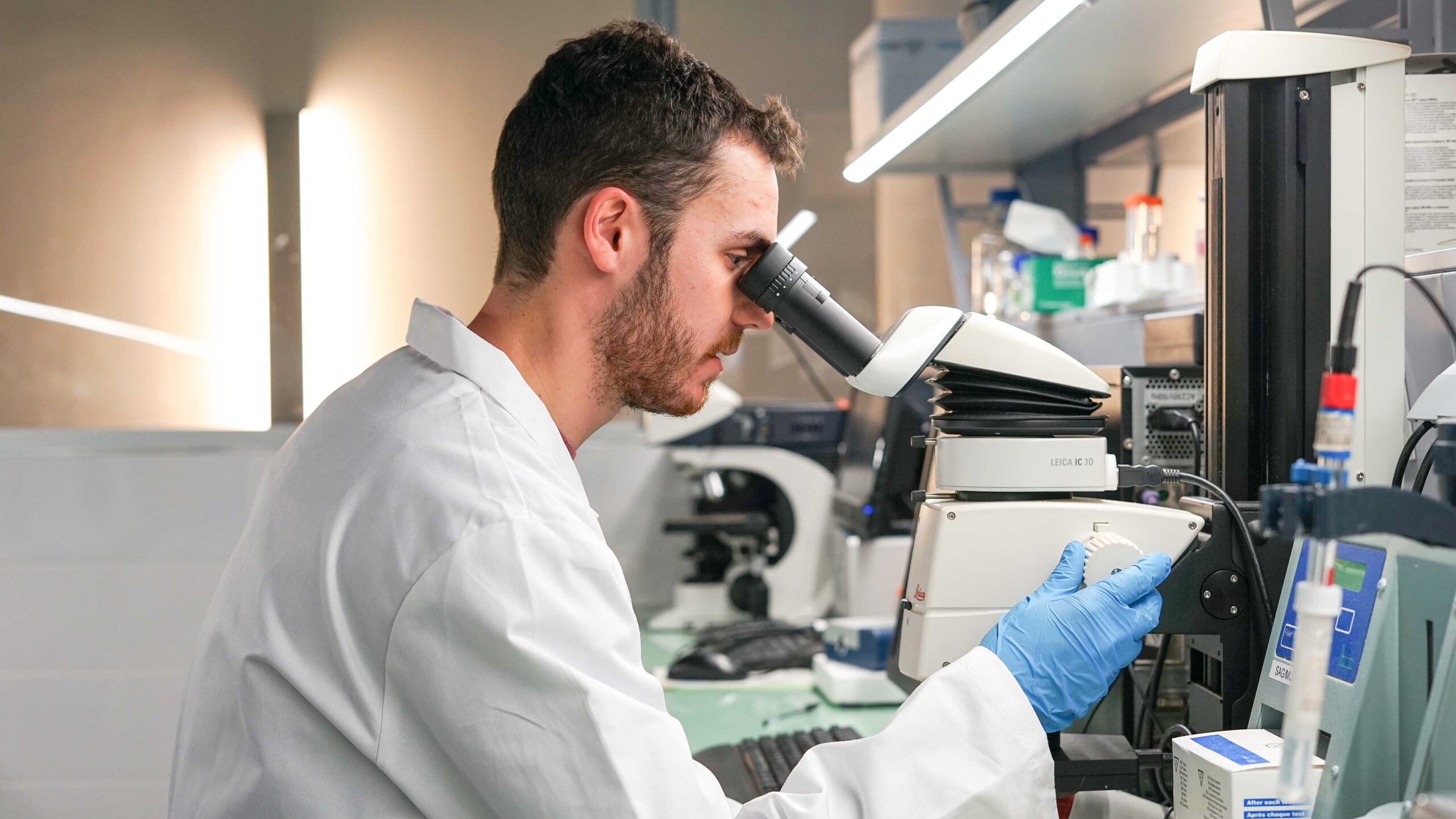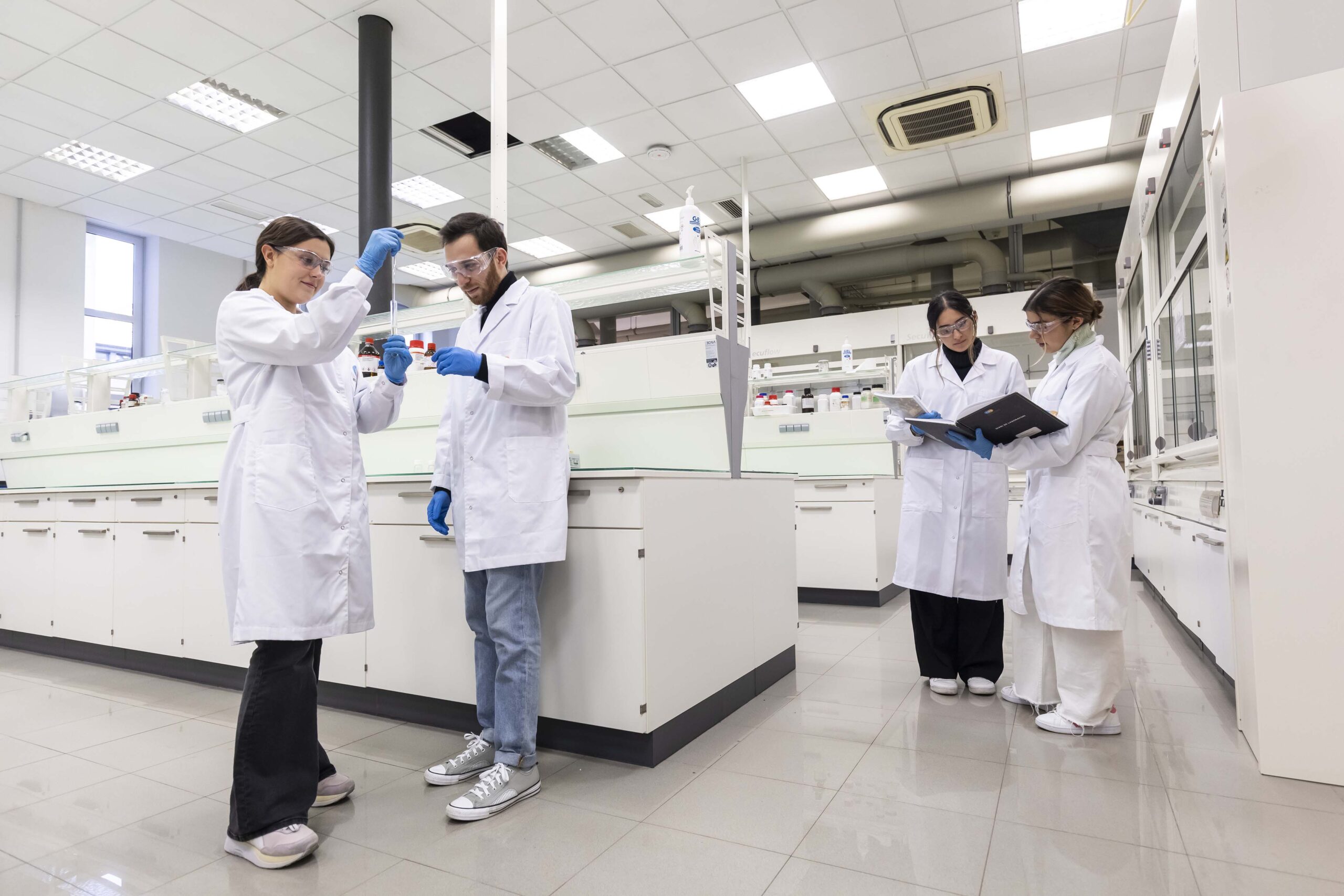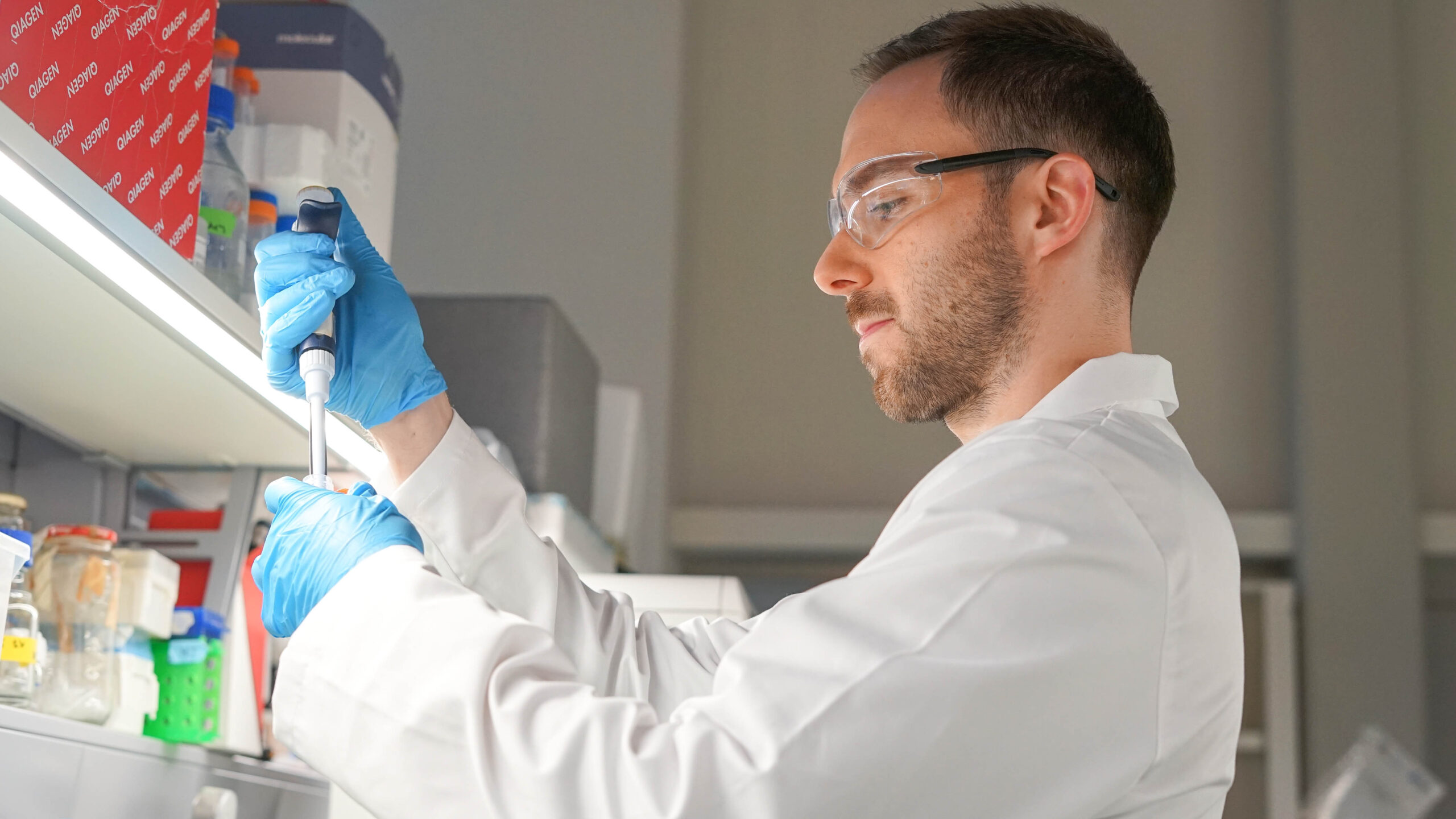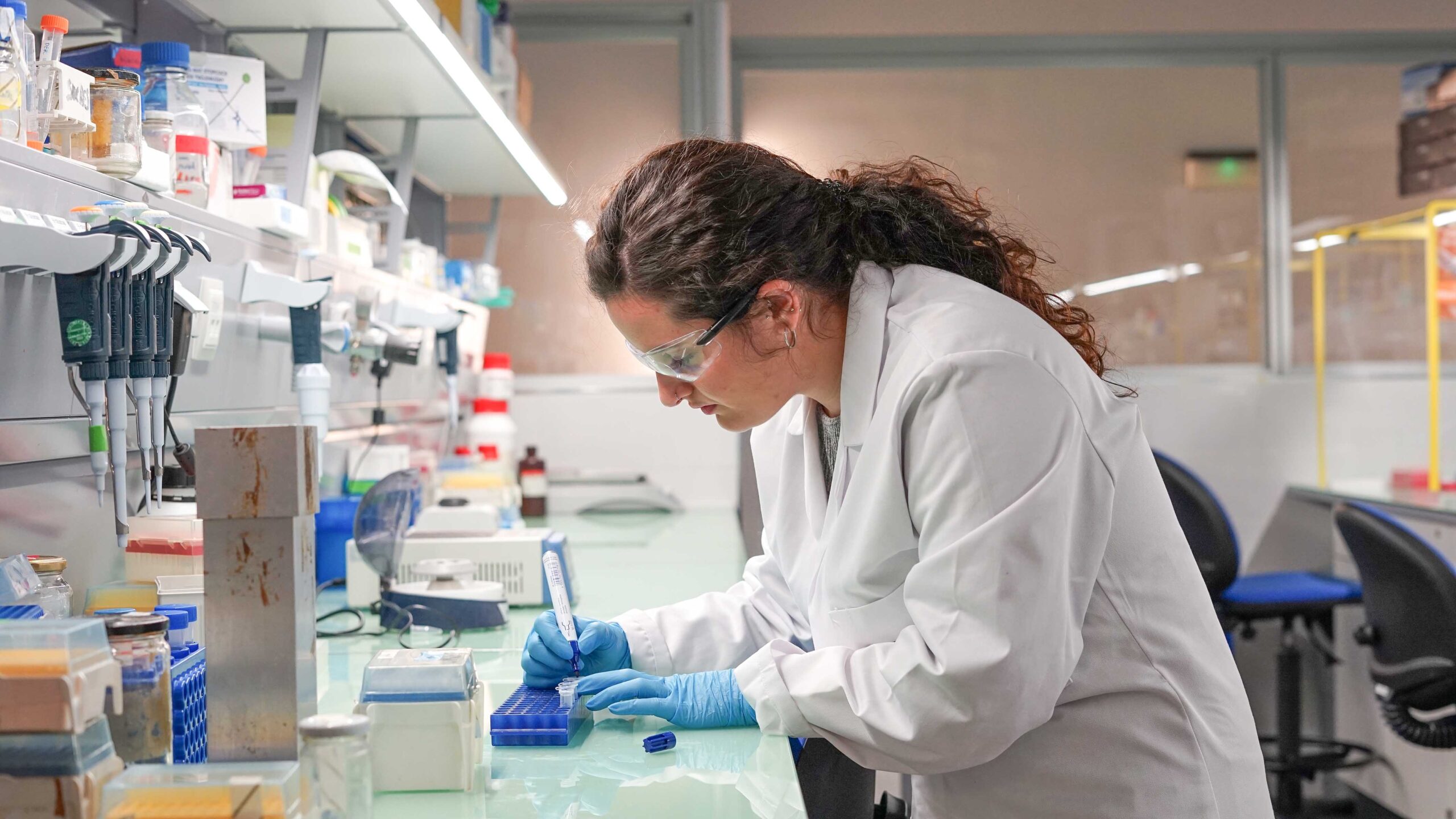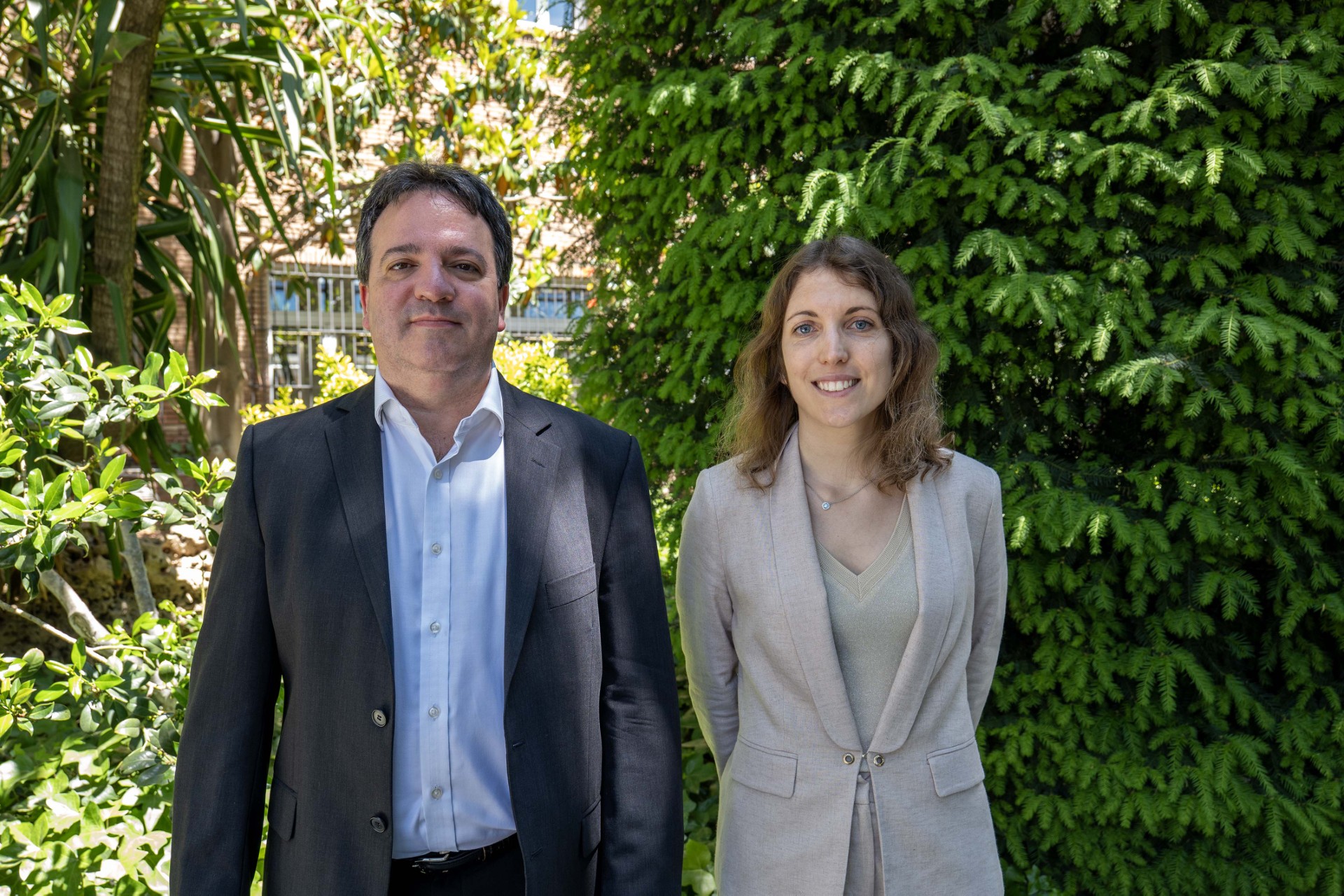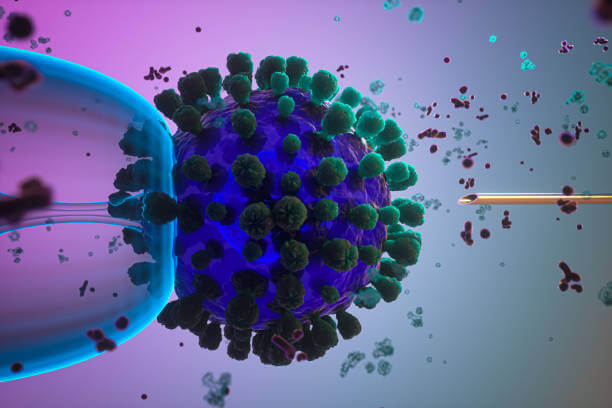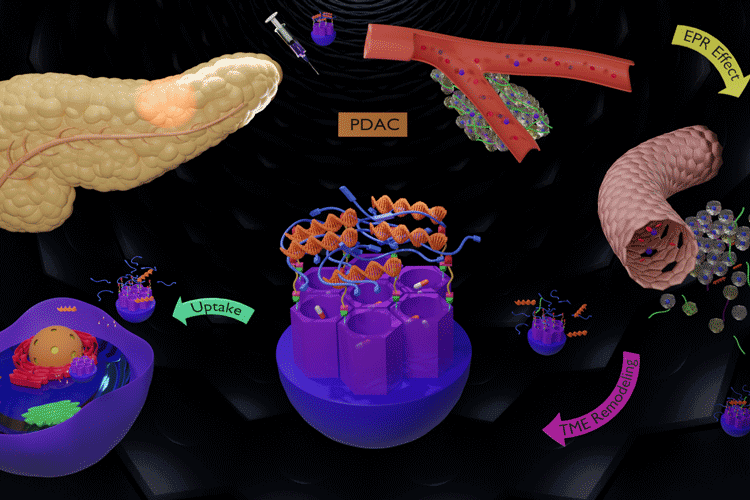Pancreatic cancer represents the fourth leading cause of cancer-related death in Europe and the United States. Its most common form is pancreatic ductal adenocarcinoma (PDAC), which is asymptomatic until very advanced stages of the disease and represented the third most lethal cancer in 2023. Current chemotherapy-based treatments have low efficacy due, in part, to the formation of a highly fibrotic stroma that isolates tumour cells and increases interstitial pressure. This hinders the delivery of drugs and encourages the development of resistance.
Currently, nanomedicine is an innovative and cutting-edge discipline that is capable of improving the pharmacodynamics of active ingredients. Over the last decade, nanovehicles have gained relevance in the therapeutic approach to PDAC. Despite their ability to improve the selectivity of drugs towards malignant cells and allow controlled release, one of the main limitations of nanosystems is the immediate formation of a protein corona (PC) on their surface as soon as they are injected into the bloodstream. These proteins attached to the surface of the particles act as a label that makes it easier for immune system cells to detect and eliminate them quickly, thereby decreasing the selective accumulation of the systems at the target point.
Within this context, Dr Iris Pontón Barroso has recently conducted her doctoral thesis at IQS with the aim of developing and studying new nanovehicles based on mesoporous silica nanoparticles (MSN) that are capable of overcoming the challenges of PDAC. Under the title Engineering Artificial Protein Coronas on Mesoporous Silica Nanoparticles: A Targeted Approach for Pancreatic Cancer Therapy, her thesis was supervised by Dr David Sánchez García and conducted within the Materials Engineering Group (GEMAT) at IQS.
In her thesis, Dr Pontón proposes three nanosystems based on MSNs to overcome the challenges associated with PDAC, addressing the problem of the formation of PCs around nanoparticles (NPs). To do so, the NPs have been functionalized with a crown of albumin, to reduce their detection by macrophages, also acting as a buffer to retain the drugs in the NPs. The binding of albumin to NPs has been carried out using new molecules designed and synthesised at the IQS Supramolecular Chemistry Laboratory. These molecules, which have groups that are sensitive to specific stimuli, have allowed the preparation of new controlled release systems.
New nanovehicles with an artificial corona for controlled drug release
The first system consists of a nanovehicle formed by MSNs and a corona of albumin, capable of releasing a conjugate of camptothecin and gemcitabine (CPT-GEM) in a controlled manner in response to the acidic pH of the lysosomes of tumour cells. In addition, two peptides have been added to the protein corona to give the system selectivity for PDAC cells and further reduce the sequestration of the systems by macrophages. This system has been evaluated in PDAC cells, showing superior efficacy to analogous systems described in the literature, based on gemcitabine monotherapy.
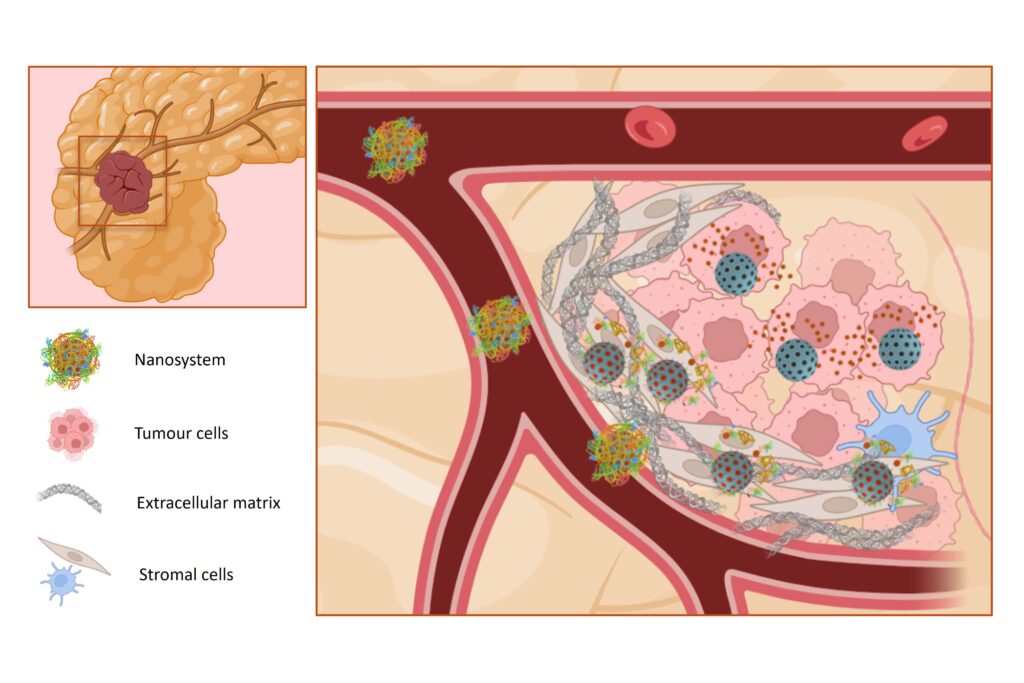
The second proposal aimed to prepare and characterize a nanovehicle that combines photodynamic therapy and chemotherapy. The design of a protein corona sensitive to singlet oxygen made it possible to obtain a controlled release system of the drug doxorubicin through light. This system has shown high cytotoxicity in very low concentrations of the nanovehicle when irradiated with red light.
The third nanovehicle developed in Dr Pontón’s thesis aimed to create an advanced system that is potentially capable of both accumulating in and penetrating the tumour microenvironment of pancreatic cancer. To achieve this, 45 mm diameter NPs loaded with the CPT-GEM conjugate drug were used. The nanovehicles were conjugated with a hybrid coating made up of a cationic polymer and albumin, linked to the NPOS by a new molecule with two groups sensitive to two pHs. Thanks to these stimuli, this strategy makes it possible to progressively reduce the tumour size in the extracellular environment and inside tumour cells. This nanovehicle has shown superior efficacy, against two PDAC cell lines, to that of analogous systems described in the literature based on gemcitabine monotherapy. Both the design and the results obtained with this system give it potential for preclinical evaluation.
Part of this research has been conducted in collaboration with the Tissue Engineering Laboratory and the Biotherapies Laboratory at IQS.
Related publications
Preparation of porphyrin and phthalocyanine conjugates for biomedical applications, 2021, Journal of Porphyrins and Phthalocyanines, 25, 917-929.
Preparation and Applications of Organo-Silica Hybrid Mesoporous Silica Nanoparticles for the Co-Delivery of Drugs and Nucleic Acids, Nanomaterials 2020, 10(12), 2466.
Part of this thesis has been conducted through a grant from the Spanish Ministry of Science and Innovation – AEI within the framework of the Nanopan-3D project (PID2021-126346OB-I00).

